改性Cu-ZSM-5直接催化分解NO毕业论文
2020-05-23 16:23:54
摘 要
随着经济的不断发展,化石能源的不断消耗,以机动车为代表的移动源和以火力电厂为代表的固定源,它们所排放的氮氧化物日益增多,其对人类健康、大气和生态系统的影响越来越严重。因此如何有效的减少氮氧化物排放,已成为当今社会研究的热点。目前,几种可行的的NOx排放控制技术已得到发展,如选择性催化还原(SCR)、选择性非催化还原(SNCR)、直接催化分解法。其中,直接分解NO生成N2和O2,因其分解过程中无须添加还原剂,避免了二次污染,被视作是一条NO减排的理想途径。Cu-ZSM-5在低温下分解NO具有良好的活性。其中在550oC时,催化活性能达到85%,从而成为中低温区间最具有吸引力的催化剂之一。然而Cu-ZSM-5分子筛依然存在着一些问题比如氧阻抑现象、使用温度区间比较窄、抗硫抗水能力差等。
本课题主要是研究不同制备方法对Cu-ZSM-5分解NO的效果,考察掺入Ce、Zr、La组分对催化分解NO的效果,筛选出改性Cu-ZSM-5的合适组分。实验发现在250℃时,La-CeO2-ZrO2-Cu-ZSM-5/10 % MgH2的脱硝活性达到最高,最高脱硝效率为85%,有望成为一种很好的NO直接分解所用的催化剂。
关键词:氮氧化物 催化分解 分子筛
Research on direct decomposition of NO over modified Cu-ZSM-5
Abstract
With the development of economy and the consumption of fossil energy, nitrogen oxides (NOx) emitted from mobile and stationary sources are considered to be one of the most harmful air pollutants because of their devastating effect on human health, the atmosphere, and ecosystems. Therefore, how to reduce emissions of nitrogen oxides effectively has become the social hot spot. Several practical NOx emission control technologies have been developed, such as Selective Catalytic Reduction, Selective Non-Catalytic Reduction and Direct catalytic decomposition. Among various NOx removal strategies, the direct decomposition of NO into N2 and O2 is the most desirable method with respect to both environmental and economic considerations as it does not involve the addition of toxic reducing agents and the products of the reaction (N2 and O2) are nontoxic. The enhancement of the catalytic performance of Cu-ZSM-5 at a low temperature still remains a fundamental research problem. Therefore, it is necessary to modify Cu-ZSM-5 so as to decrease the activation temperature.
This paper studys the influence of different preparation methods on Cu-ZSM-5 decomposition of NO and the effect of different components (Ce, Zr, La) on catalytic decomposition of NO, and screens the suitable components of modified Cu-ZSM-5. At 250℃, the NO decomposition activity of La-CeO2-ZrO2-Cu-ZSM-5/10 % MgH2 reaches the highest(85 %). La-CeO2-ZrO2-Cu-ZSM-5/10 % MgH2 is expected to become a good catalyst for the direct decomposition of NO.
Keywords: Nitrogen oxides;Catalytic Decomposition;Zeolite
目 录
摘要 I
Abstract II
第一章 绪论 1
1.1课题研究背景 1
1.2脱硝技术简介 2
1.2.1 吸附法脱硝技术 2
1.2.2 SCR脱硝技术 2
1.2.3 SNCR脱硝技术 3
1.2.4 NO直接催化分解法 5
1.3 NO直接分解法催化剂的研究进展 5
1.3.1 贵金属催化剂 5
1.3.2 金属氧化物催化剂 6
1.3.3 钙钛矿(ABO3)及尖晶石型(A2BO4)复合氧化物催化剂 7
1.3.4 杂多化合物催化剂 8
1.3.6 分子筛类催化剂 8
1.3.7 总结 9
1.4 Cu-ZSM-5催化剂发展方向 9
1.5 Cu-ZSM-5催化剂的制备 10
1.5.3浸渍法 10
1.6 研究目标及主要研究内容 10
第二章 实验方案与内容 11
2.1 主要试剂和药品 11
2.2 改性Cu-ZSM-5催化剂的制备 11
2.3 催化剂脱硝活性测试 13
第三章 实验结果与分析讨论 15
3.1 脱硝活性测试 15
3.2 样品表征分析 17
第四章 结论与展望 20
4.1 结论 20
4.2 展望 20
参考文献 21
致谢 23
第一章 绪论
1.1课题研究背景
随着如今人类社会的发展,如何保护环境日益成为全世界科研者们思考的问题。尤其是大量排放的氮氧化物NOx加剧了大气污染[1]。氮氧化物是燃烧过程中氮的各种氧化物总成,其中90 %以上是NO,少量是NO2,N2O4,N2O,N2O5等含量很少。NOx的量受燃烧过程中温度和氧气含量影响,温度越高,生成的NOx越多,而且氧气在高温条件下会直接与空气中的N2反应,生产NO,生成的NO一部分直接转化成N2O和NO2,接触空气时,NO会与O2结合,生成NO2。
NO是无色气体,含刺激性气味,低浓度时本身毒性不大,高浓度会对人的神经中枢系统造成阻碍,还会被空气中的O3直接氧化成剧毒的NO2。NO2是一种棕色的刺激性气体,易与人体中的血红蛋白发生作用,生成变性血红蛋白,造成血液输氧能力不足,对肺和心肌也有很强的毒害作用。同时燃料燃烧和机动车尾气所排放到空气中的NOx发生光化学反应,NO2和大气中的水分子生成硝酸从而形成酸雨污染环境,破坏土壤酸度,影响植被生长,且促使地面附近形成光学烟雾,这不仅影响能见度,也对人体有强烈的刺激作用。对此,众多学者都在进行相关研究,致力于控制NOx的排放,目前几种比较常用的脱硝技术有:选择性非催化还原(Selective Non-Catalytic Reduction,SNCR)、选择性催化还原(Selective Catalytic Reduction,SCR)和直接催化分解法等[1-4]。
相关图片展示:

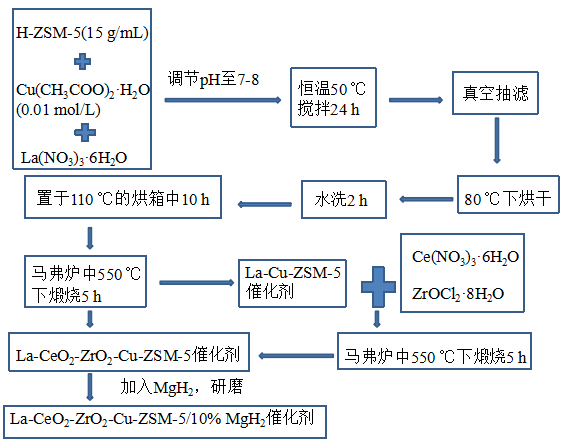
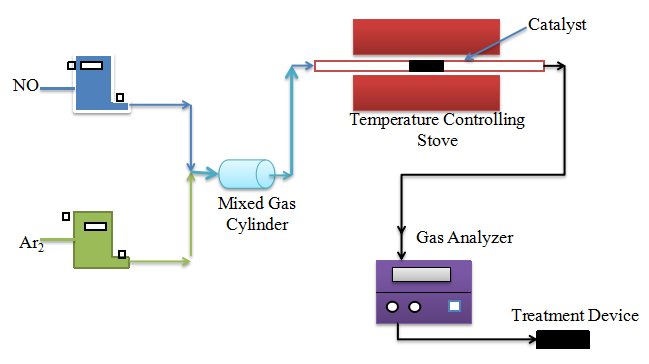
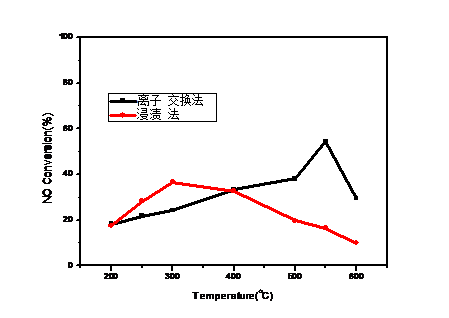
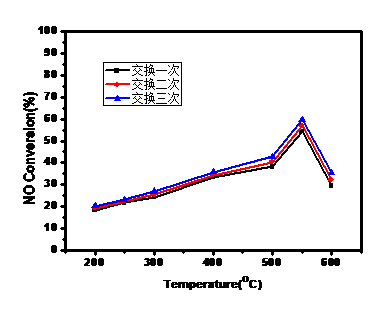
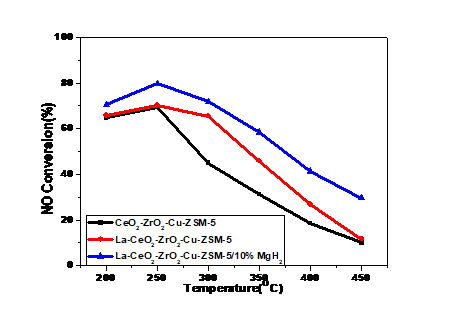
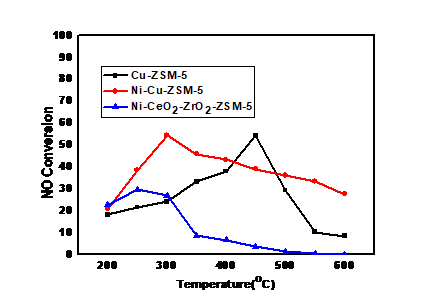
课题毕业论文、开题报告、任务书、外文翻译、程序设计、图纸设计等资料可联系客服协助查找。



